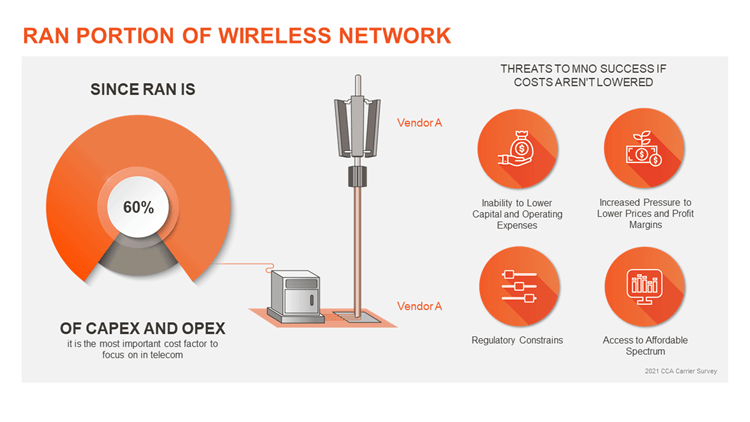Contents
Connectivity: The past, the present and future
Remember the days of dial-up Internet connections, when we used to get irritated as the Internet moved like a snail. Surely, each one of us has a few distant, hazy memories of those days. At present, technology is available to us at the touch of a button. However, despite being in a digital world, the Internet is not as fast as it should have been. We still face connectivity issues, unexpected call drops, network congestions, file download failures, and video buffering errors.
All of this will change before you realize it’s happening.
The connectivity landscape stands at the threshold of a new era—an era where existing and emerging technologies converge to create a fully-connected world. In the next few years, connections are all set to be 10 times faster with latency improving up to 50 times. Connections worldwide are about to take a new direction, reaching more people across varied geographies. All thanks to 5G and the ultra-high-speed networks it enables. 5G has indeed become the apple of network creators’ eyes in no time.
RIC Blitzkrieg: Disrupting RAN all the way
With the arrival of 5G, network demands have indeed hit the roof. This puts pressure on the radio access network (RAN)—a critical component of network infrastructure. It tends to be more complex than before. Tackling the complexity of RAN would not be a child’s play for network creators. They need to automate the deployment and optimization of data-centric technologies to enhance the quality of experience (QoE) for end-users. This is where RAN Intelligent Controller (RIC) comes into the picture.
If RAN was a human body, then RIC would be its brain. Such is the power of control that RIC exercises on the resources and the other elements of RAN. It takes RIC hardly anywhere between 10 milliseconds to 1 second to accomplish this task. RIC is a software-defined, open platform that utilizes Machine Learning (ML) and Artificial Intelligence (AI) to empower RAN with automation, intelligence, programmability, and decision-making abilities.
The disaggregation of traditional RAN architecture takes place when RIC decouples the control and data aspects of RAN to drive an intelligent, evolving radio network. RIC allows RAN to deliver third-party applications and services on a wireless network. Using network intelligence, these applications facilitate new use cases (such as edge computing) or improve existing use cases through better network intelligence, control, and resource assurance.
In the end, money matters to network creators too
As per a Qualcomm report, 5G technology will have a market valuation of $13.1 trillion by 2035. They say always make decisions with the long-term in mind. Network creators indeed have critical decisions to take as their future plans for 5G architecture have just begun taking shape. Cost-efficiency is a top priority for network creators. As per projections, they would be spending $890 billion on 5G networks in the coming five years.
Typically, for any network, Capital Expenses (CAPEX) is ~30% of Total Cost of Ownership (TCO), and Operating Expenses (OPEX) is ~70%. We cannot reduce TCO unless both OPEX and CAPEX are reduced. Everything deployed as part of RAN includes two cost components: deployment cost and operating cost. Considering that OPEX is a higher proportion of the total TCO value, OPEX reduction is the key to long-term profits.

Automation has a direct impact on OPEX and reduces the TCO during different stages of a network’s lifecycle. A network operator can reduce OPEX through automation of network deployment and operations using AI/ML techniques wherever necessary. RIC helps network operators accomplish the same in the context of RAN.
The RIC facilitates the reduction of both infrastructure and operational costs, enhances the performance of a network, optimizes resource utilization, and improves business agility. It also network operators create new revenue streams with differentiated services, location tracking abilities and network slicing. Truth needs no defence indeed. The findings of Analysis Mason’s recent study with network operators choosing RAN TCO reduction as the principal commercial factor driving RIC deployment do not come as a surprise.
How RIC builds an ecosystem for reduction of TCO
Conventionally, networks were built on proprietary hardware. Therefore, the obligation to stick to a single vendor along with a vendor lock-in period restricted the freedom of network operators. RIC facilitates a flexible, open environment in RAN. It also enables a multi-vendor ecosystem and allows network operators to leverage interoperability to the fullest. This lays the foundation of a secure, independent, vendor-neutral RAN environment. Using RIC, software apps can be plugged-in on an as-need basis. Being an open platform, RIC is also capable of hosting xApps and rApps. RICs control base stations from different vendors. They also help reduce energy cost by performing unique functions like switching off radio at non-peak hours. All the above benefits would help network operators with cost-saving, generation of new revenue streams, and provide users with an enhanced network experience.
Conclusion
Underestimating the importance of RIC could prove to be a major mistake for network operators. It plays a critical role in optimizing and controlling the communication function within RAN. RIC is also responsible for creating an open environment and inculcating much-needed decision-making abilities. For network operators, openness and automation bring along the benefits of a multi-vendor ecosystem and the opportunity to reduce TCO in the long run.















